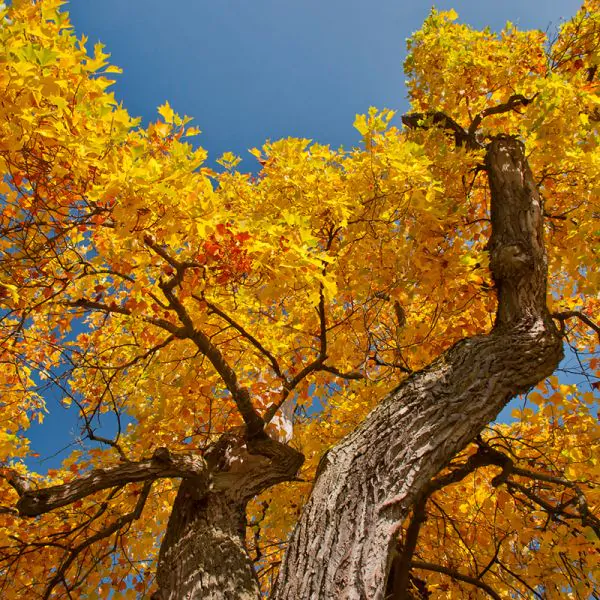Gardening enthusiasts are often drawn to plants that do more than sit prettily in a garden bed. They seek out trees, shrubs, and flowers that offer not only aesthetic appeal but also a range of benefits to the environment and local ecosystems. The Tulip Poplar, or Liriodendron tulipifera, stands as an exemplar of this symbiotic relationship between humans and the natural world. Let’s dive deep and discover why the Tulip Poplar is a must-have for every gardener looking to make a positive impact on their surroundings.
Introduction to the Tulip Poplar
The Tulip Poplar, often called the tulip tree, is much more than its striking name implies. As an ornamental tree, it’s famed for its towering height and large, tulip-shaped flowers that give it a regal presence among other garden residents. But its allure extends far beyond the visual; it’s a tree with a significant ecological and historical footprint, anchoring its people and place in the garden of nature. Those touching it with horticultural interest find not just a tree to behold but a legacy to nurture.
Characteristics of Tulip Poplar Trees
The Grand Outlook of the Tulip Tree
Standing tall with a straight, vertical trunk that branches out high, the Tulip Poplar can reach towering heights of up to 90 feet, and occasionally much taller. Its canonical shape has made it a symbol of strength and endurance, a frequent choice for memorial plantings and large-scale landscapes.
Lifespan and Growth Expectations
A hearty species, Tulip Poplars are known for their rapid early growth, but their trajectory is tempered, reaching maturity within 30 to 50 years. With proper care, they can live for several centuries, representing a living connection to history and a vision for the future.
Benefits of Planting Tulip Poplar Trees
Environmental Engagements
Tulip Poplars are staunch environmental advocates. They’re prodigious oxygen producers and effective carbon sinks, boasting some of the highest carbon sequestration rates among trees. A single mature tree can absorb as much as 48 pounds of CO2 per year, contributing generously to the fight against climate change.
Aesthetic Ascendancy
Every spring, the Tulip Poplar puts on a spectacular show, dotting its branches with vibrant, tulip-shaped flowers in shades of green and orange. Its leaves, a rich green in the summer, turn golden yellow in the fall, adding a seasonal kaleidoscope that transforms any landscape.
Embracing Wildlife
The broad canopy of the Tulip Poplar provides valuable shelter and nesting sites for a multitude of bird species. Its nectar-rich blossoms, aside from attracting the human eye, are a vital food source for bees and hummingbirds. Its seeds, nestled within cone-like structures, are prized by wildlife.
Growing and Care Tips for Tulip Poplar Trees
Planting in Ideal Conditions
Tulip Poplars favor full sun and well-draining soil but are relatively adaptable to different soil types. They prefer moist conditions and are often found near rivers and streams in their native range.
Nurturing Properly
Young trees require regular watering and protection from strong winds. Mulching around their base aids in moisture retention and suppresses weeds. Fertilize sparingly, as the rapid growth of the Tulip Poplar doesn’t always necessitate additional nutrients.
Trimming and Treating
Pruning should be minimal, focusing on deadwood removal and structural enhancement when the tree is young. Vigilance against pests, notably aphids and scale insects, is key. Fungus can be an issue, so providing good airflow and avoiding overhead irrigation can prevent many common diseases.
Common Uses of Tulip Poplar
Landscape Luminary
Bearing such vibrant and sizable blooms, the Tulip Poplar is an icon in landscape design, serving as a statement in any garden or park. Its towering height also makes it a natural choice for shade-giving and as a part of windbreaks.
Timber Tales
Tulip Poplar timber is lauded by woodworkers for its work-ability, stability, and the warmth of its coloring. It holds a valued place in the industry, used for various applications from cabinetry to musical instruments.
Conclusion: A Green and Grand Legacy
In every sense, the Tulip Poplar stands tall in the realm of gardening. It offers visual grandeur and a sanctuary for myriad creatures, all while working tirelessly behind the scenes to maintain the balance of the ecosystem. If you’re a gardener with a heart for sustainability and a penchant for beauty, the Tulip Poplar is a tree to nurture with pride. Its legacy, from the past, through the present, and into the future, is as steadfast and blooming as its majestic form.


